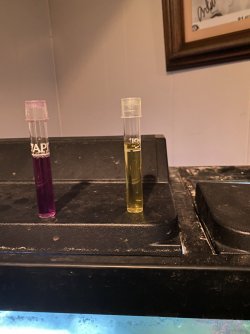fishyton
New Member
I set up my new 75 gallon tank on July 4th, I had plants in it and was adding Quick Start and my ammonia was between 4-8ppm. I added another bottle of Quick start and the ammonia stayed pretty much the same. But it it was on the 18th where I decided to add some good bacteria from the filter sponge from my established and being replaced 55 gallon. I added the water from the 55 gallon tank to a bucket and wringed the sponged in the water then I added that water to the 75 gallon. The next day, the ammonia went to 4ppm and two days later, it was at 2 ppm and two days later, it was 0ppm. I Never gotten any nitrites yet and I've been still adding ammonia but it's still showing 0ppm and the nitrites are still 0ppm as well. I tested the nitrates and it shows I have 12.5ppm; I want to mention that all these tests I have are at least 9 years old and it may be too old; I've ordered the API master test kit from Chewy.com and it will be here on Tuesday.
My question is, am I doing anything wrong and what should be my next step in order to get my tank cycled and also, should I add anymore "good" bacteria from my 55 gallon to my 75 gallon?
My question is, am I doing anything wrong and what should be my next step in order to get my tank cycled and also, should I add anymore "good" bacteria from my 55 gallon to my 75 gallon?



